Edmund Hacking - Blackburn Market Inspector for 28 years
By Stephanie Ann Warner

Stephanie Ann Warner is Blackburn Market Inspector Edmund Hacking's great-great grand-daughter. She is descended from Edmund's son John, who emigrated to Canada. In March 2017 Stephanie travelled from Vancouver, British Columbia to Blackburn to investigate Edmund Hacking's work as a market inspector. She also learned a lot about the Hacking family's background and connections to Blackburn's mid nineteenth century cotton industry.
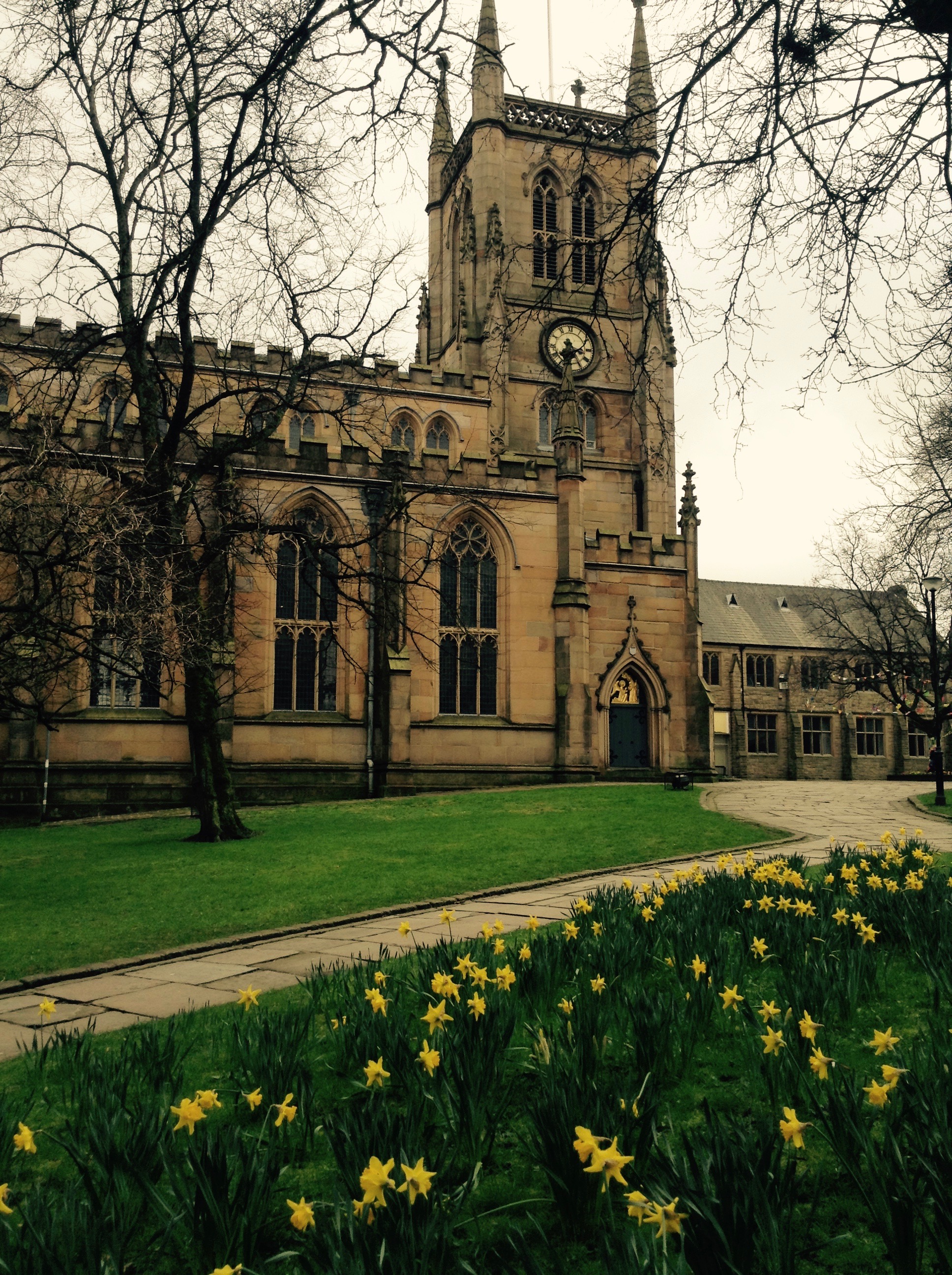 Edmund Hacking was born in Blackburn on September 7 1850 and baptized at the parish church, St. Mary the Virgin (now part of the Cathedral) on October 23 1850. His parents were John Hacking, son of John Hacking of Blackburn and Ellen Dugdale of Great Harwood. Ellen appears to have been born in 1822 to Edmund Dugdale, son of John and Peggy. The Dugdale name in Great Harwood goes back many generations. John Hacking and Ellen Dugdale were married in June 1849 in St. Mary the Virgin. At the time of their marriage, John was a "labourer". John's father was a farmer and Ellen's father was a cord winder. This is the first of many Hacking connections to Blackburn's textile industry.
Edmund Hacking was born in Blackburn on September 7 1850 and baptized at the parish church, St. Mary the Virgin (now part of the Cathedral) on October 23 1850. His parents were John Hacking, son of John Hacking of Blackburn and Ellen Dugdale of Great Harwood. Ellen appears to have been born in 1822 to Edmund Dugdale, son of John and Peggy. The Dugdale name in Great Harwood goes back many generations. John Hacking and Ellen Dugdale were married in June 1849 in St. Mary the Virgin. At the time of their marriage, John was a "labourer". John's father was a farmer and Ellen's father was a cord winder. This is the first of many Hacking connections to Blackburn's textile industry.
The 1851 census shows John and Ellen Hacking and 7 month old son Edmund living at "Cunningham" in the Royshaw area and working as hand loom weavers. The census shows that there were many weavers as neighbours, all living at farms such as Royshaw Farm, Baggart Hall and Waves.
The Hackings appear to have had another child, Martha, born just one month after their June 1849 marriage (married so she would be legitimate?) but she does not appear living with the family in the 1851 or 1861 census.
By 1861, the Hackings had two more children, Jenny and John. They lived in Hole in the Wall, Shearbrow. John Hacking's occupation was now "victualler." This point suggests that he had moved away from loom weaving, as it was no longer financially viable (the 1860s were difficult years for Blackburn's textile industry).
By 1865, there was one more Hacking child, James. Before 1871, Ellen Dugdale Hacking had died, as she does not appear in the 1871 census. The family now lived in the Whalley Range area at Higher Brook Farm. John Hacking, farmer, first appears in the 1870 Blackburn directory.
The textile industry may have picked up by this time, as three Hacking children were working in the industry - Martha (21) and Jenny (18) were cotton winders. John (12) was a "half times weaver" - working for half a day, attending school for half a day. Edmund Hacking (20) probably did this kind of job in his youth, but had now moved into a different kind of work - he was a porter for the Lancashire and Yorkshire Railway.
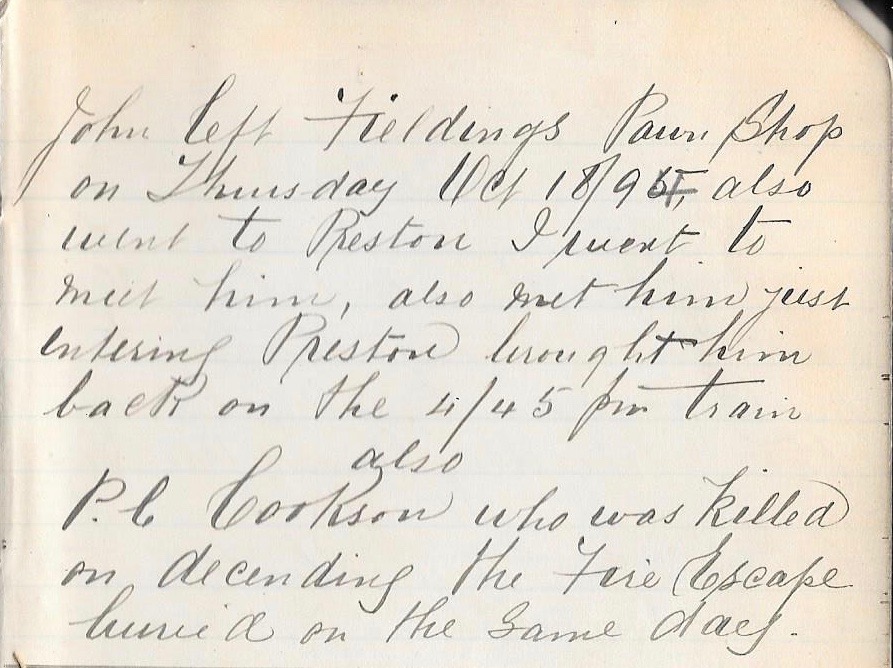
Edmund Hacking later kept a notebook of inspirational quotes about working hard, acquiring property and bettering ones' self.
He appears to be a product of the Samuel Smiles Self Help movement, prevalent at that time. He may well have taken advantage of learning opportunities at working mens' institutes affiliated with the Lancashire and Yorkshire Railway.
Apart from marrying someone who worked in the textile industry, Hacking was to move away from that world.
On November 5 1874, Edmund Hacking married Catherine Brooks at St. Mary the Virgin. The witnesses were Edmund's sister Martha and Catherine's brother George. All parties signed their own signatures, indicating (at least) some level of literacy.
Catherine Brooks was born in 1851, the eldest child of the intriguingly named Doctor Brooks and Lettice Baron (married 1850 at St. Mary the Virgin). Catherine was also baptized in the same church. Despite his name, Doctor Brooks was in fact a painter, gilder and paper hanger. He was a product of the Victorian era, when painting and papering rooms became en vogue. It's more than probable that the paper he hung was produced in nearby Darwen.
The Brooks family lived in Paradise Lane, and from the 1870s onwards in Penny Street. In 1871, Catherine Brooks' brother George was a cabinet maker. Her sisters were cotton winders. Catherine was a cotton heald knitter. (Healds are lengths of cord on a loom through which the warp threads ran).
Edmund and Catherine Hacking lived at 67 Shearbrow at the time of their marriage. In 1875, their first of four sons - Arthur - was baptized at the new Shearbrow Church, St. James. By 1879, when their second son John (my great-grandfather) was born, the Hackings lived at Joseph Street in St. Paul's Parish. John was baptized at St. Paul's church (both church and street longer exist, but the street was minutes from Corporation Park, a nice feature for the growing Hacking boys.)
In March 1877, Edmund Hacking was appointed Police Constable No. 42, Blackburn Borough Police Force. Unfortunately, Hacking's name cannot be found in the police ledger.
In July 1879, the Blackburn Town Council needed to appoint a new market inspector, as the current inspector, John Ormerod, had become Lamp Superintendent. At the August 7 1879 General Purposes and Paid Officers Committee, the Sub Committee reported that it had considered applications and recommended that Police Constable No. 42, Edmund Hacking, be appointed at a salary of 30 shillings a week and that he be provided with a suit of uniform once a year. Edmund Hacking was appointed Market Inspector on August 8 1879.
By the August 21 1879 Markets Committee, Hacking made his first report - the cellars under the market house were without gas, and he suggested that a meter and fittings be installed. Edmund continued in the position of Market Inspector for over 28 years. His obituary noted that the period he had worked as inspector had "witnessed a wonderful development of Blackburn as a centre for produce."
Hacking's duties included collecting fees for hot water and keys from stall holders. He also had to submit an annual report every summer.
Edmund Hacking was a member of "friendly societies", the Order of the Druids and the Manchester Unity of Oddfellows, for over 40 years. These organizations acted as an early form of health insurance and savings and loan.
By 1891, the Hacking family lived on Oswald Street on Richmond Hill. Hacking's job title was now "Market Superintendent", though it appears his job was market inspector, as the two job titles were later used interchangeably. Edmund's eldest son Arthur (15) was a pawnbroker's assistant. John (11) and Edmund (9) were at school. In 1882, the Hacking's fourth son, Gilbert, was born.
Meanwhile, Edmund Hacking's father and siblings lived at Shearbrow. Jenny was a heald knitter. James was a bookbinder. John Hacking appears to have been boarding in Great Harwood and working as cotton weaver. Martha was married to a cotton factory worker and lived in Great Harwood.
In contrast, Catherine Brooks Hacking's family were working in more "genteel" trades - Doctor Brooks now called himself a decorator, George was a joiner, Martha was a draper's assistant, Mary Ellen was a dressmaker and Florence was a milliner.
Edmund may have spent more time with his in-laws than his own family. Jenny and James Hacking were living very close by, yet this entry in Hacking's diary suggest he was not in contact with them: "Monday June 5 1893. Sister Jenny married to Daniel Gregson, landlord of the Audley Arms, Audley Lane. Brother James best man, Miss Standing maid. I received no invitation, also married some time before I received information of the marriage."
In 1894, the Hackings were still in Oswald Street, when John (14) left his apprentice job at Fielding's Pawn Shop (on Addison Street or Furthergate) and went to Preston. Edmund recalled: "I went to meet him, met him just entering Preston and returned on the 4.45 train." No more is said whether John returned to Fielding's. But it would not be the last time that he left home without his father's approval.
A year later, John's brother Edmund ("Teddy") commenced working at Marsden and Marsden, Solicitors, across from St. John's Church, at 4 - / week.
By 1897, the Hackings lived on Langham Street (alternatively called Langham Road). While most of the houses appear modest, the area was clearly "select". The Hackings were surrounded by white collar neighbours, such as bank and railway clerks. They were just minutes' walk from Corporation Park along Park Lane. Things were looking up for the Hackings.
On Monday, September 24 1897, Arthur Hacking commenced business on his own account as a joiner (he'd possibly been trained in this work by his Uncle George Brooks). By 1900, Arthur had a cabinet making business, premises at the Crown Hotel Yard. The 1901 census shows Arthur still living at home but by 1906, he lived at 37 Whalley Range. He was a cabinet maker and upholsterer. He had married Ellen Ainsworth. Arthur had three daughters Nellie, Bessie, Katie.
In 1901, Edmund Hacking, Jr. (18) was a clerk for the telephone company. Gilbert (8) attended St. John's Church of England Junior and Infant National School. He also sang with the St. John's Church choir. (The family had a long affiliation with St. John's Church).
Edmund's son John Hacking was absent from the 1901 census -- he had run away from home before his 19th birthday. Edmund wrote in his diary: "March 12 1898: My son John left home without my consent and joined the 1st battalion Coldstream Guards Regimental Number 1524." John served in the Boer War and then (according to family legend) stood guard outside Buckingham Palace. In
John emigrated to Canada in 1904 and worked as a policeman in Winnipeg, Manitoba. He later moved to Vancouver.
In November 1906, Edmund Hacking had been inspector of the Blackburn markets for just over 28 years. Suddenly, things were about to change.
Someone sent the Town Clerk a letter, which made an allegation about Hacking and the letting of a market stall. It's possible that this issue could be connected to the vacant confectioner's stall on the open market let to Mr. J. Connolly Jr. in September 1906 (this is only stall letting mentioned in the fall 1906 market committee minutes).
The Thursday December 13 1906 Markets Committee resolved to refer the matter to a special Sub Committee which met on December 1906. Yet, by this time, the person who had made the allegation had withdrawn the statement and apologized. The Sub Committee made a unanimous decision that the statement was entirely without foundation. It's not clear whether Hacking was informed of the decision unofficially at this time (the report was made official in January).
Edmund Hacking would have had a lot on his mind in December 1906 - even without the stress of the allegation. There was the annual cattle show early in the month and the wholesale and retail markets on December 24 (a decision was made to move them from the 26th). That Christmas Eve, Edmund must have returned home after a long day at the market not feeling well. He fell ill and pneumonia soon "supervened" (as the newspapers put it). By the first days of the new year, Hacking lay dangerously ill.
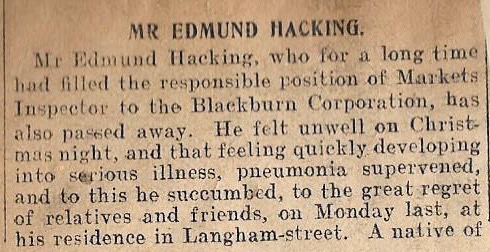
The Thursday January 3 1907 Town Council meeting (as reported in that evening's newspaper) thought it "desirable" to make public the fact that there was no substance to the allegation about Hacking -- in light of the fact he was so ill. But it was to no avail. On the night of Sunday January 6 1907, market inspector Edmund Hacking died. He was 57 years and 4 months.
On Thursday January 10 1907, a funeral cortege left the Hacking home on Langham Street and made its way to St. John's Church. The newspaper later reported that "the blinds of nearly all the houses in the district were drawn and as the cortege passed on its way to the church, hats were raised in reverent salute."
There were six carriages of mourners (all listed in the Saturday newspaper) including: Hacking's brothers John and James,sisters Martha Shackleton and Jenny Gregson, brother-in-law George Brooks, sisters-in-law Mary Ellen Woodruft, Florence Hodgson and Martha Fielding (married to Blackburn councillor J. Fielding, later J.P. and Mayor). During the service, the coffin - made of oak with brass fittings - was placed in the chancel. Several key Town Hall persons were in attendance, including councillors and aldermen and staff such as W. Stubbs, Borough Engineer and J. Riley, Inspector of Weights and Measures.
Edmund Hacking was interred at the Blackburn Old Cemetery. Several wreaths were left on his grave, such as those from the office staff, the Blackburn Butchers' Association and the Fruit and Potato Merchants' Assistants.
The Blackburn newspapers were full of obituaries and accolades for Edmund Hacking. This one from "Penovim" in the Northern Daily Telegraph had a nice summary of Edmund's work as Market Inspector: "Mr. Hacking's duties have not been easy, but he has discharged them with fidelity, and endeavoured to hold the balance fairly between numerous interests and trading competitions represented in Blackburn's big market."
The following week, the Blackburn Town Council passed a vote of sincere sympathy and condolence for the Hacking family. It also found Hacking's replacement for market inspector: Mr. J.C. Houghton, toll collector. Houghton had worked for the Borough for several years, "been consistent in his duties and had been a great helper to the late Mr. Hacking." Houghton was appointed at a salary of 120 pounds per annum with a uniform.
Later in 1907, Edmund's 15 year old son Gilbert started his apprenticeship with William Fazakerly, accountant, in Richmond Terrace. A few months later he left the position and began work with Mr. Thompson, electrical engineer, on Victoria Street. Gilbert continued in the electrical engineer work for the next seven years.
Meanwhile, John Hacking in Vancouver had married in June 1907.
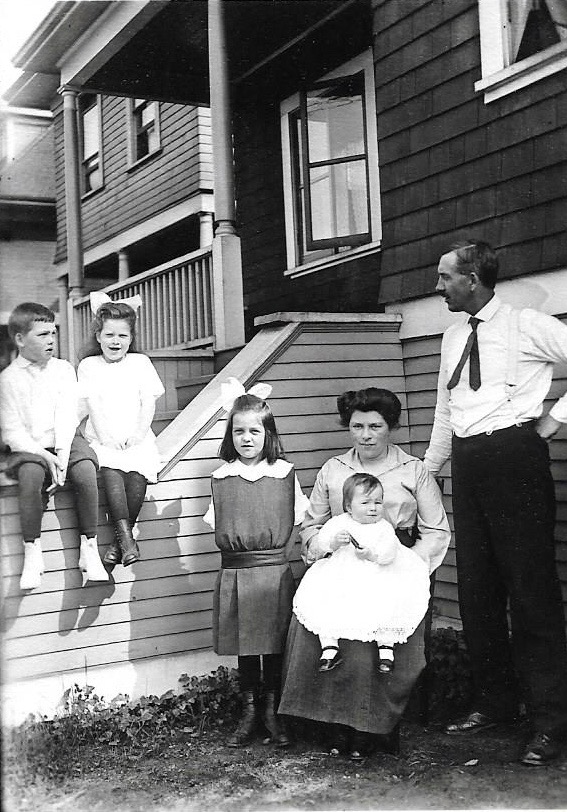
A few years later, John's brother Edmund, then working as a clerk, decided to go to British Columbia. John was now working as a BC Electric Railway Tram conductor and had small children (John Edmund, Katie and Doris -- another daughter Cassie was born later). John's Canadian-born wife Tilly was not impressed with her English brother-in-law. He put his boots out at night, expecting her to polish them! Edmund returned to Blackburn. But he had got enough "copy" for a detailed article, published in a Blackburn newspaper -- Life in British Columbia - Hints for Emigrants.
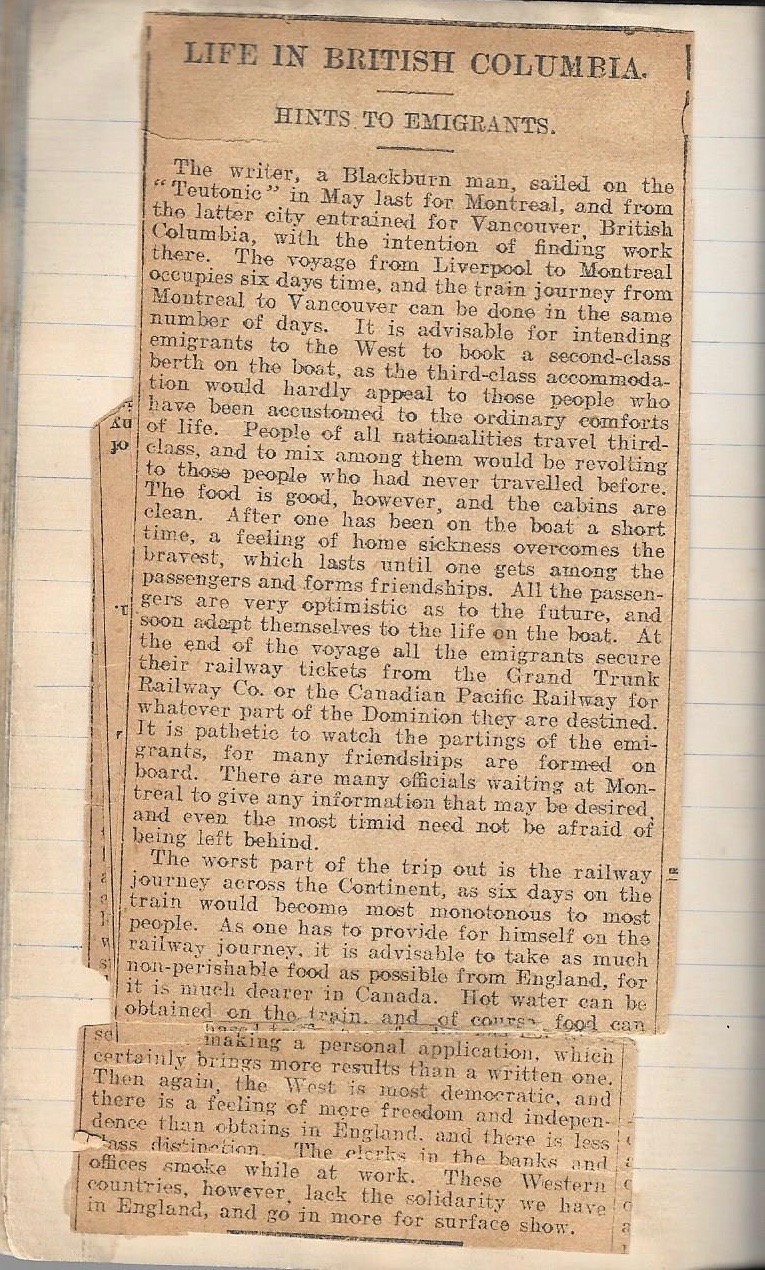
When the First World War came to Blackburn, Gilbert Hacking (and it's believed Edmund Hacking) enlisted. Gilbert joined the King's Royal Rifles and was killed on the Somme in September 1917, aged 24 years old. He is buried in Grove Town Cemetery in France. Gilbert Hacking's name is also on the Blackburn War Memorial situated in Corporation Park.
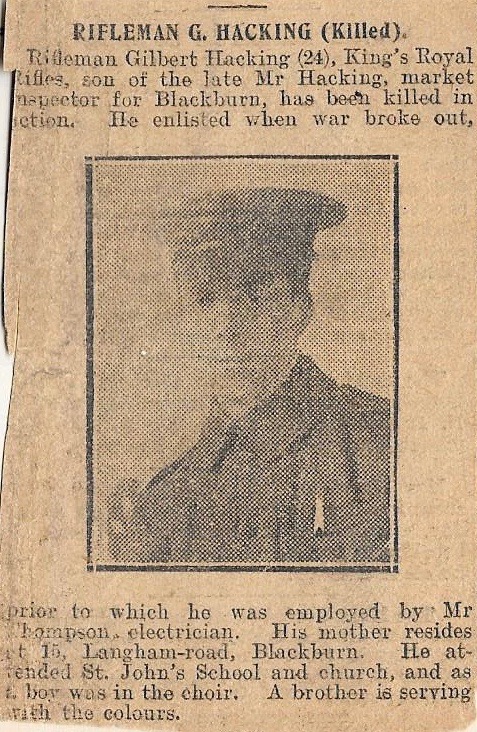
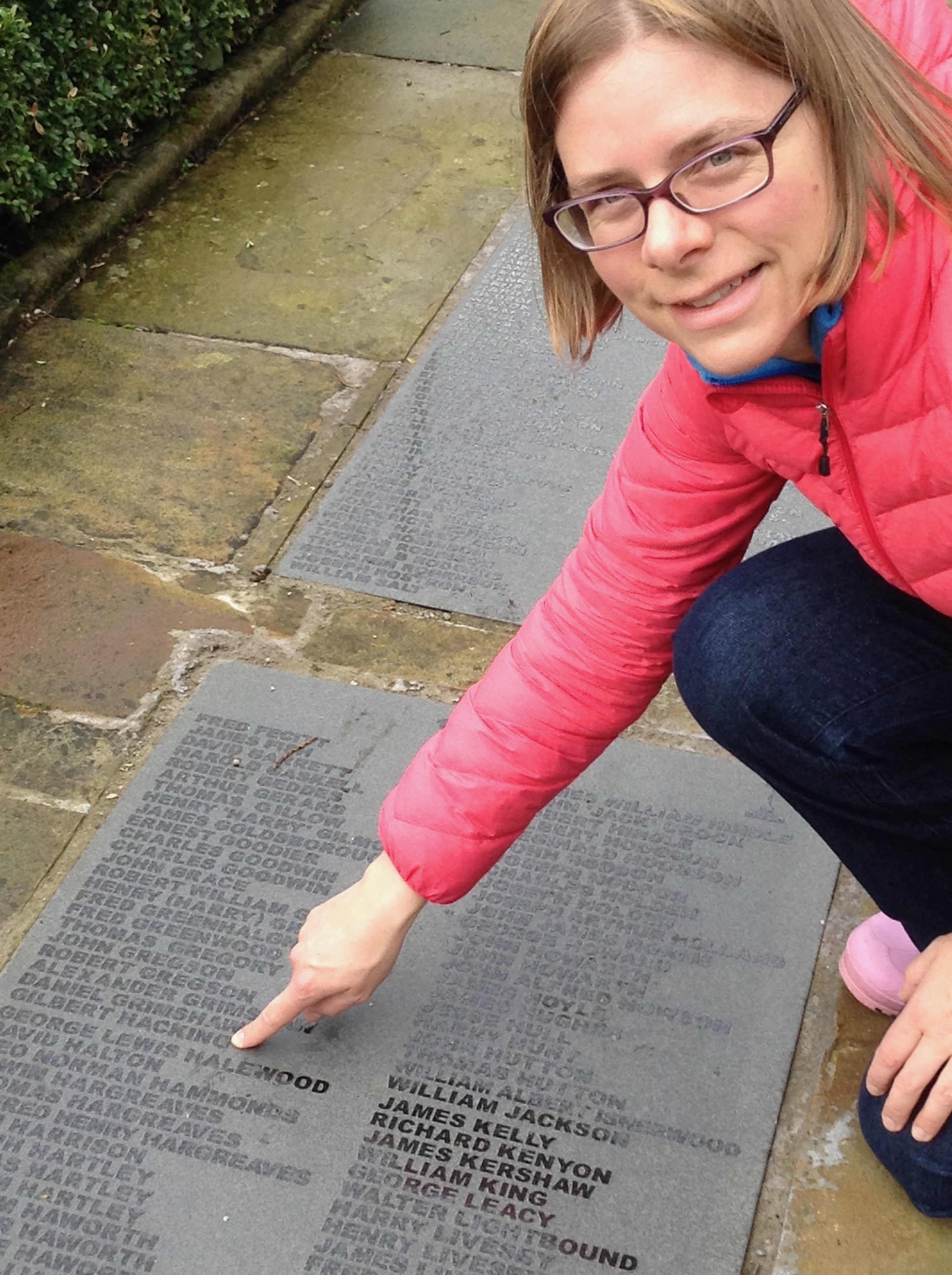
In the mid 1920s, Edmund Hacking's son John returned home to Blackburn to visit his family.
In 1933, a photo feature appeared in the Blackburn Times - Four Generations at Blackburn - a photo of Edmund Hacking's 82 year old widow Catherine, his son Arthur (now of Blackpool), Arthur's daughter Nellie (Mrs. Fred Crompton) and Arthur's grand-daughter baby Freda Crompton.
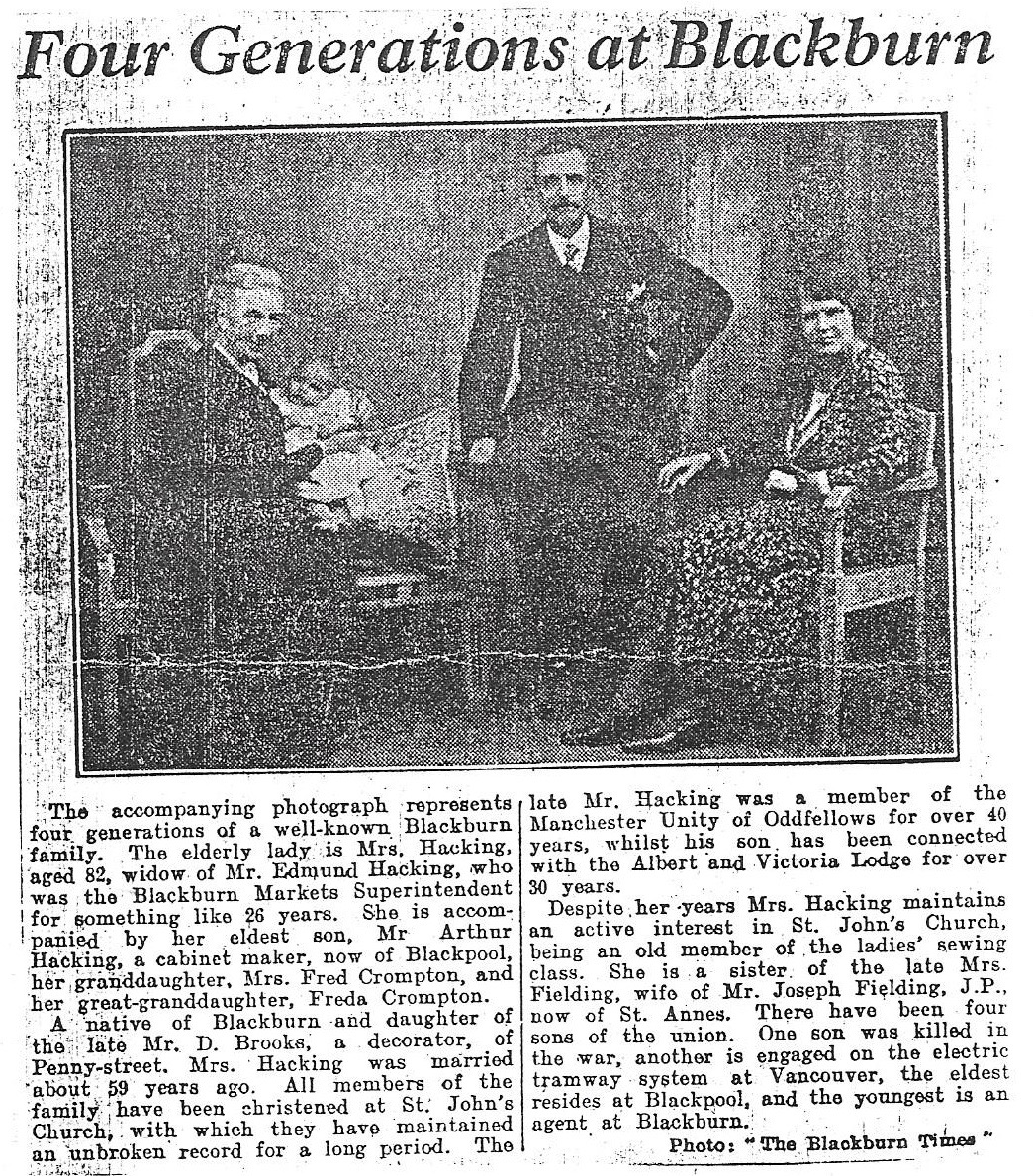
Catherine was highly involved in St. John's church. She died in January 1937, aged 86. Her obituary noted that "despite her age, she has been remarkable active" and was the oldest member of the St. John's ladies' sewing circle. Catherine Hacking was buried in the Hacking family plot at Blackburn Old Cemetery.
Of Edmund and Catherine's children, what happened next?
Arthur Hacking died in 1947. He had three children: Nellie, Bessie and Katie. Nellie's daughter Freda became a nurse.
John Hacking died in Vancouver in 1940. John's children had varied careers: John Edmund worked for BC Electric and later as driving and speedreading instructor. Catherine (Katie) lived in Tofino. She taught school, and later ran a marine gas station with her husband. She also became very active in town issues. Doris worked for BC Electric, demonstrating how new appliances worked. In her later years, Doris enjoyed weaving on a homemade loom (a nice connection to her Hacking roots!) Cassie was a chartered accountant, who worked for Price Waterhouse in London in the post war years.
Edmund Hacking, Jr. continued to live in Blackburn and was working as an "agent" in the 1930s. Apparently he was affiliated with the International Correspondence School. He died in 1957 and was buried in the family plot.
As of March 2017, when I visited the family plot (please see image below), it was in good condition, with the carved names clearly visible. Daffodils were growing on the grave.
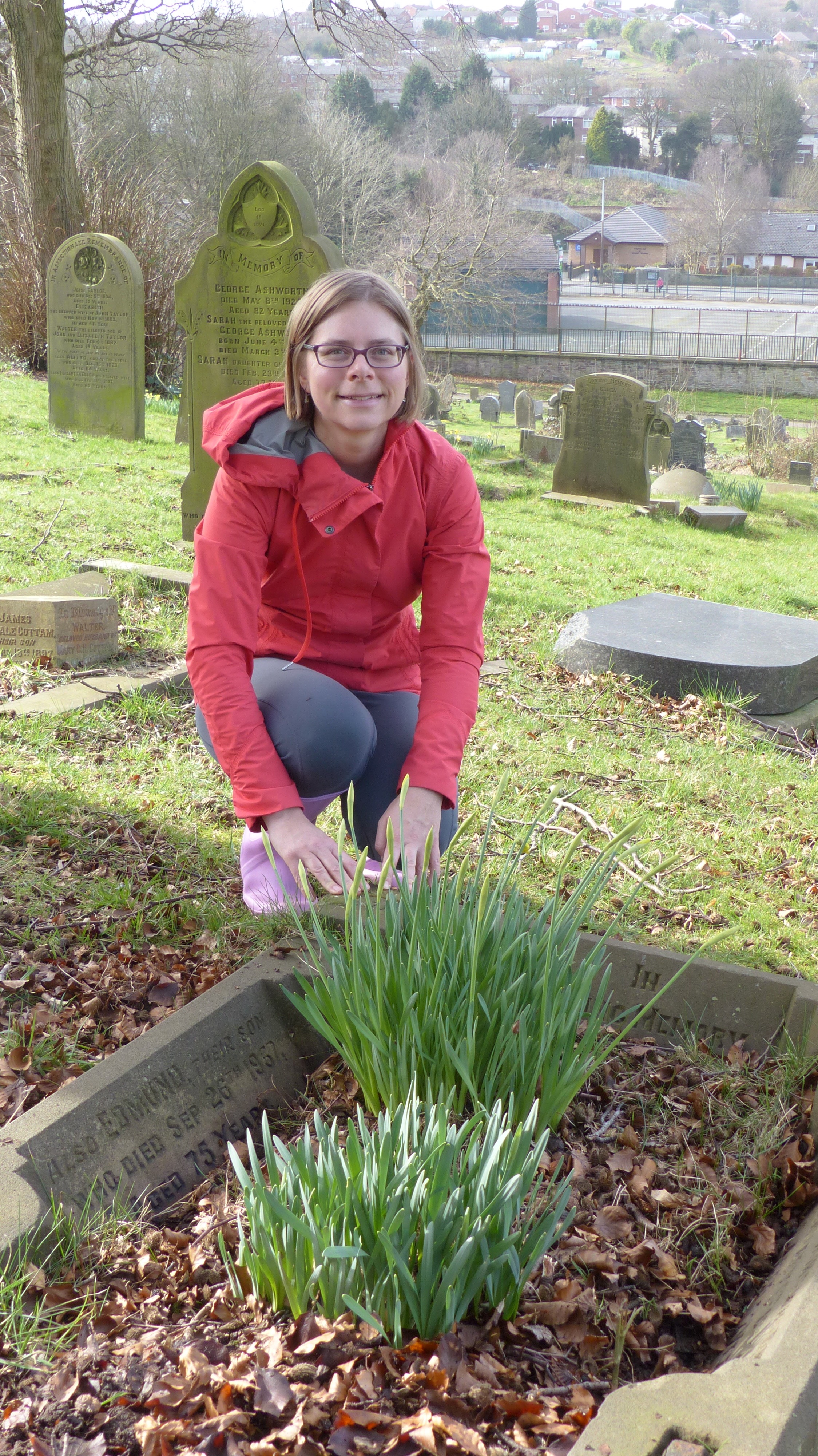
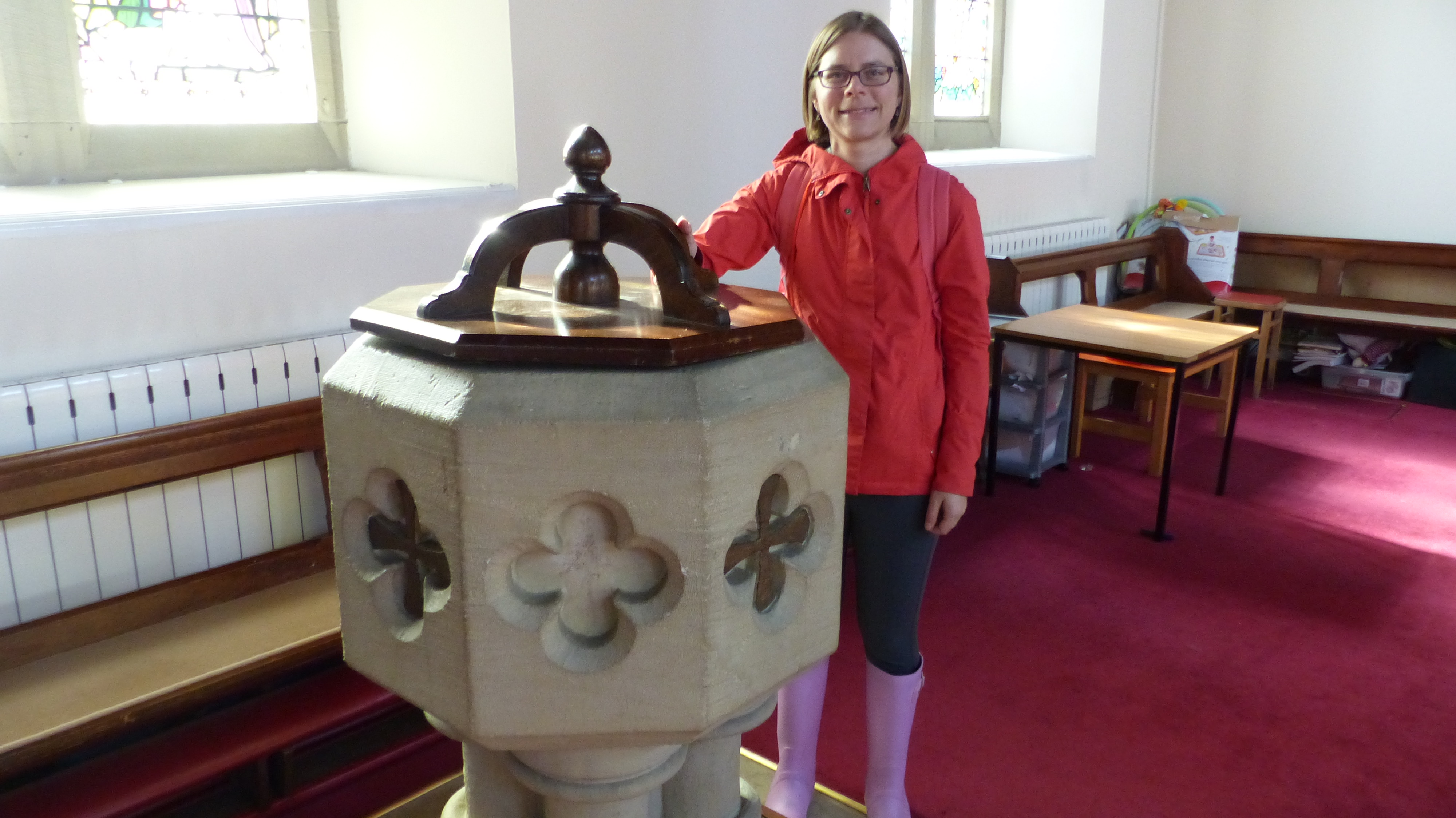
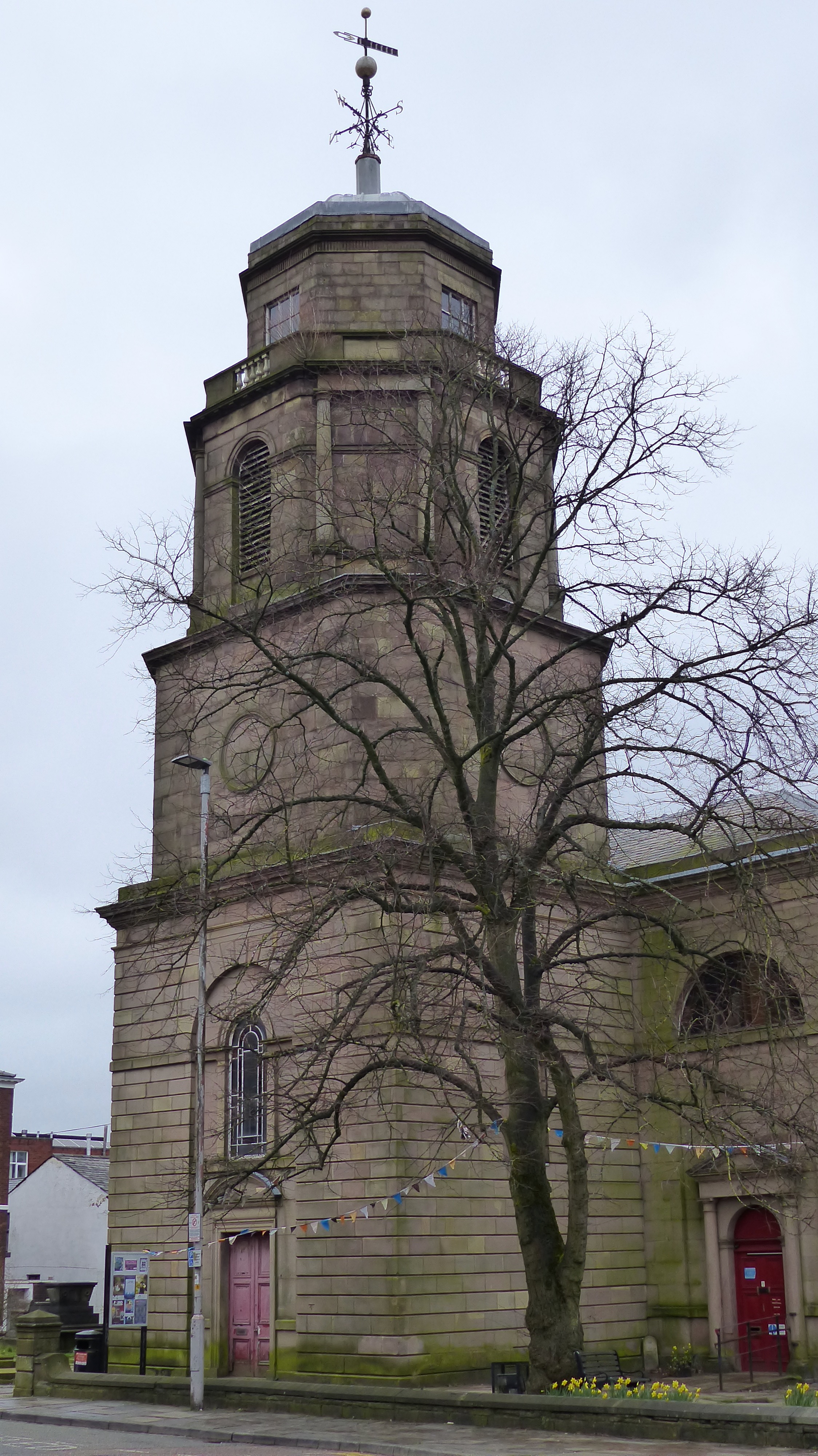
All images and research © Stephanie Ann Warner
back to top

